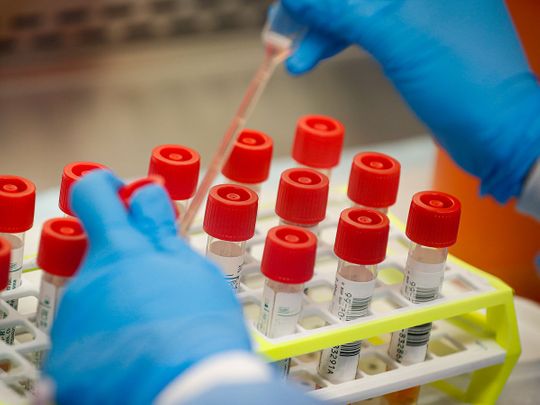
There’s new a coronavirus variant in Cyprus. It’s a combination of two variants that have been going around. Since the samples showed mutations found in Omicron and Delta, medical experts have named it Deltacron. A scientific name has yet to be announced. The World Health Organisation (WHO) has not officially commented on this, but several scientists have said that it is not a new strain but the result of lab contamination.
Based on media reports, this is what we know about Deltacron.
What’s the new strain?
The new COVID-19 strain Deltacron combines the traits of Delta and Omicron variants. Ten of the mutations from Omicron were found in the 25 samples taken in Cyprus.
Leondios Kostrikis, head of the laboratory of biotechnology and molecular virology at the University of Cyprus, said: “There are currently Omicron and Delta co-infections, and we found this strain that is a combination of these two. The discovery was named Deltacron due to the identification of Omicron-like genetic signatures within the Delta genome.”
Where’s the variant found?
It has been detected only in Cyprus. That too in 25 samples, 11 of which came from patients who were hospitalised while the rest 14 was from the general population. There have been no reports of Deltacron in other parts of the world.
The findings had been sent to Gisaid, an international database that tracks changes in the virus, a Bloomberg report said.
How infectious is the new variant?
Deltacron infection is higher among hospitalised patients than the non-hospitalised patients, Kostrikis said. But its true virulence is yet to be ascertained.
Should we worry about Deltacron?
It’s too early to know the impact of Deltacron, although Cypriot Health Minister Michael Hadjipantela said the new variant isn’t of concern.
In an interview with Sigma TV, Kostrikis said Omicron could overtake Deltacron. “We will see in the future if this strain is more pathological or more contagious or if it will prevail” against the two dominant strains, Delta and Omicron.
Medical experts are dismissive, saying it’s not even a variant, while others said it sounds scarier than it is.
Is it a recombinant virus or a ‘scariant’?
Nick Loman, a microbial genomics professor at England’s University of Birmingham, said recombinant forms is a possibility when multiple variants of a pathogen are circulating.
While a recombinant form of Delta and Omicron would not be a complete surprise, the finding from Cyprus is more likely a “technical artefact” that arose in the process of sequencing the viral genome, Bloomberg quoted Loman as saying.
Eric Topol, a physician and Molecular biologist Eric Topol of the Scripps Research Translational Institute, termed Deltacron a ‘scariant’ instead of a variant. He said it’s a “new subtype of ‘scariant’ that isn’t even a real variant but scares a lot of people unnecessarily.
Scientists cast doubt on the new variant
Some experts say that Deltacron is not a new strain, and it could be the result of laboratory contamination. Tom Peacock, a virologist at Imperial College London, tweeted that the Deltacron sequences reported widely look like contamination, as they don’t “cluster on a phylogenetic tree and have a whole Artic primer sequencing amplicon of Omicron in an otherwise Delta backbone.”
When new variants come through sequencing, lab contamination isn’t that uncommon (very very tiny volumes of liquid can cause this) — just usually these fairly clearly contaminated sequences are not reported by major media outlets,” Peacock wrote on Twitter.
“Recombinants are definitely worth keeping an eye on and almost definitely will eventually be found, this particular example is almost definitely contamination though,” he wrote.
Peacock’s assertion found favour with WHO COVID expert Krutika Kuppalli, who said there was likely a “lab contamination of Omicron fragments in a Delta specimen.”
“There is no such thing as Deltacron. Omicron and Delta did not form a super variant. This is likely sequencing artefact (lab contamination of Omicron fragments in a Delta specimen),” she tweeted.
Fatima Tokhmafshan, a geneticist at the Research Institute of the McGill University Health Centre in Montreal, and Boghuma Kabisen Titanji, an infectious disease expert at Emory University in Atlanta, too said all current data points to a lab contamination rather than a mutation.
Cyprus researcher denies lab contamination
Kostrikis denied that in a Bloomberg report saying, since the samples were processed in more than one country and “at least one sequence from Israel deposited in a global database exhibits genetic characteristics of Deltacron. These findings refute the undocumented statements that Deltacron is a result of a technical error.”
The infection is higher among hospitalised patients 19 than the non-hospitalised patients, which rules out the contamination hypothesis, Kostrikis said.
He said the cases “indicate an evolutionary pressure to an ancestral strain to acquire these mutations and not a result of a single recombination event”.








